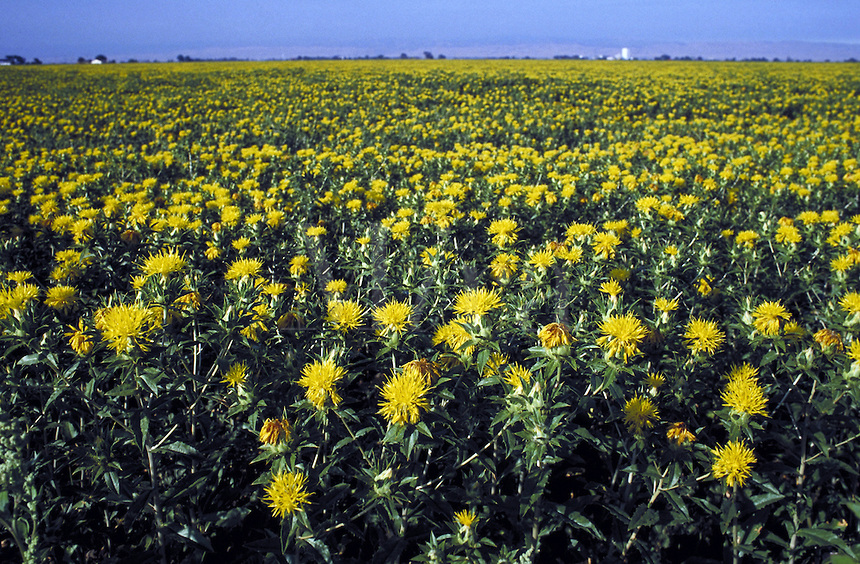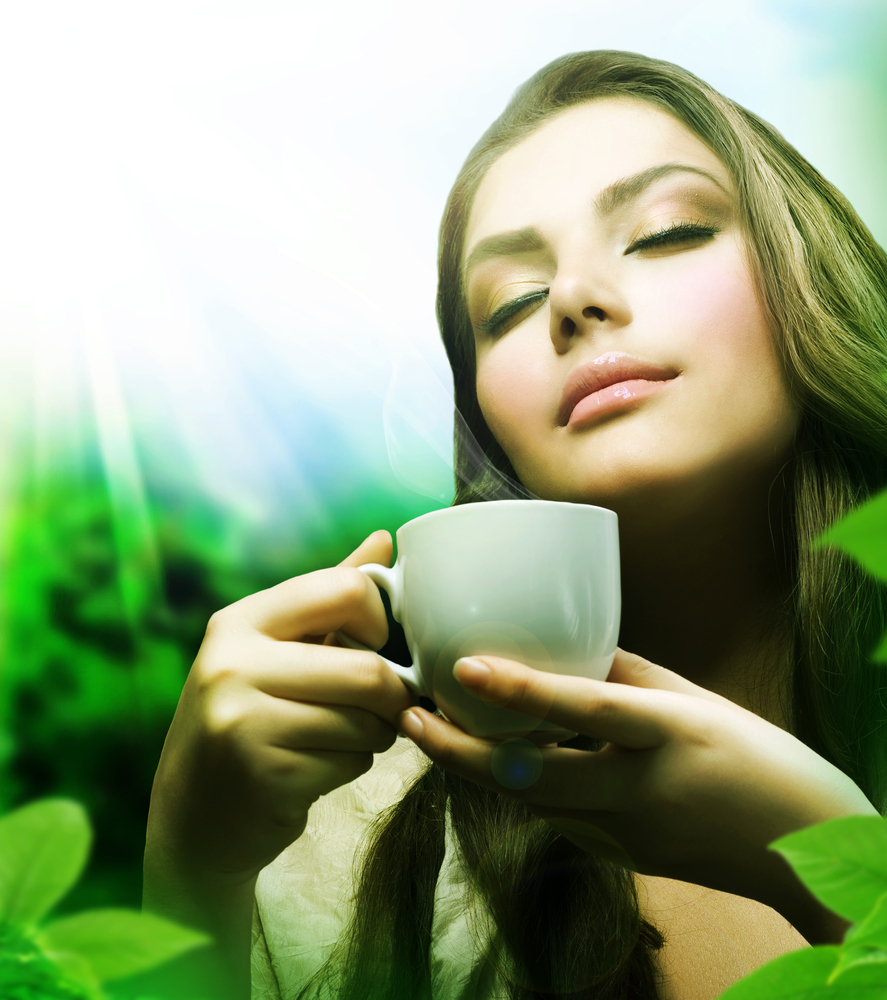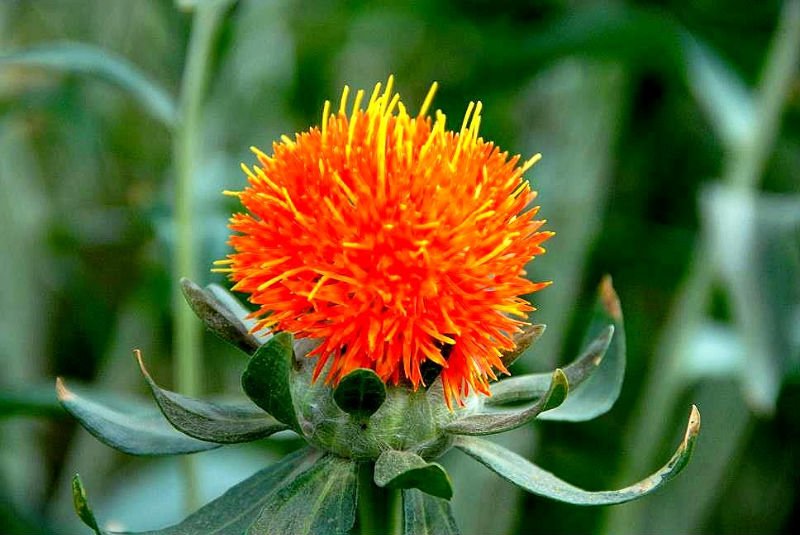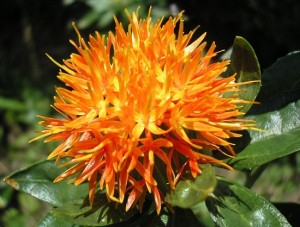on January 9, 2013in Edgar Cayce Products, Natural Healingtags: american saffron, assimilation, digestive enzymes, Edgar Cayce, leaky gut, tea, yellow saffron
Yellow Saffron Tea heals the digestive tract (including leaky gut syndrome), assists in digestion (assimilation) of foods, and boosts2 immune function. I highly recommend that it be drank until the person is super healthy. It is the BEST tea that I know of for healing the digestive tract.
The dosage for adults is as follows: Pour one cup of boiling water over a pinch of the Yellow Saffron tea leaves. Let this steep for at least 20 minutes, then strain. You may drink about one ounce, or 2 tablespoons, up to 1 cup, before meals and before bed, daily. Make it fresh at least every two days. You can change the strength and the amount of the tea to your own preference.
For children, use a pinch of tea to a cup of water, and give 1 or 2 teaspoons of tea 4 times per day, before meals and at bedtime. Again, make fresh every other day.
It should be taken BEFORE meals, not after, and may be taken before bed, also. Refrigerate any left over for the next day, but finish it (if there is any left at the end of the second day.) There is no caffeine in Yellow Saffron Tea.
Do the Yellow Saffron tea for 10 days straight, then take 4 days off. Repeat indefinitely, or switch to a different tea.
RECOMMENDED BY EDGAR CAYCE
If one were to use as a guide the number of times an item is mentioned in the Edgar Cayce readings, it would be safe to say that every avid devotee of the readings should drink Saffron Tea! Of the 250 times the herb Saffron is called for, approximately 200 refer to its use as a tea – more than any other tea mentioned in the readings – ranking fifth among the herbs named. Teas which appear often in the readings are Watermelon Seed, Mullein, Camomile and Ragweed in that order, but Saffron leads the list by a wide margin.
Knowing why Saffron was recommended, for what ailments and for what purposes, leads us to conclude that it can be useful to many of us. Were one interested in specific health advice, the place to look would be complete readings on a particular malady (psoriasis or diabetes, for instance) or collections of readings (Circulating Files) rather than extracts taken out of context. For our purposes here, though, we will consider broadly the part Saffron plays as a healing agent not necessarily the complete regime to be followed in curing specific ailments. That is to say, these extracts should stimulate a concerned person to look further.
One other remarkable aspects of the readings is the way the Cayce source prescribes an herb or an herbal remedy and then goes on to explain in detail what the item does to bring about healing.
The activity of this [Saffron Tea] upon the gastric flow of the stomach and duodenum and through the alimentary canal will tend to allay, and to work with the activities that supply the mucous membrane flow along the canal itself, thus aiding the body. [Psoriasis] (3112-1)
SAFFRON TEA AS AN INTESTINAL ANTISEPTIC
- Also during the period when the colonic irrigations and the osteopathic treatments are being given, we would take a great deal of the Saffron Tea (made from American Saffron), that it may aid in creating better activity through the peristaltic movement of the eliminating system. [Poor Eliminations] (1930-1)
- And about twice a day (this between the meals) have half an ounce of Yellow Saffron Tea; not too strong. This as we find will prevent the accumulations of gas and the inflammation to be absorbed by the activities of these properties through the system. [Intestines: Gas] (428-11)
- The Saffron Tea is very well as an intestinal antiseptic … [Measles] (487-26)
- The extracts quoted above enlarge on why Saffron was recommended – “creating better activity through the peristaltic movement of the eliminating system,” “prevent the accumulations of gas and the inflammation to be absorbed,” “an intestinal antiseptic” – rather than just because the tea was recommended in connection with a particular ailment.
- The major topics under which Saffron Tea is indexed are psoriasis (14 references), lacerations (19), eliminations (13), assimilations and eliminations: incoordination (14), toxemia (14) and ulcers (21). From this list we can see that Saffron works on the stomach and intestines and is an aid to those skin ailments the cause of which is a malfunction in the alimentary canal.
- What is this marvelous herb and how readily available is it? The readings were not specific, but apparently the herb referred to was Carthamus tinctorius, which is also known as Saffron, Bastard Saffron, Safflower and American Saffron. The other Saffron, the true Saffron was Saffron, is Crocus sativus. It is grown in western Asia, Spain, France and Austria. When compacted it is also called hay saffron.
- Of Carthamus tinctorius Myers tells us it “is cultivated in England and America and the countries surrounding the Mediterranean Sea. The orange-red florets are the official parts.”1 Culbreath indicates that Carthamus tinctorius is cultivated in India and America.2 Kloss, likewise, refers to Carthamus tinctorius as American Saffron, false saffron, Bastard Saffron, and Safflower, but does not state where it grows, and does not mention Crocus sativus at all.3 Harris calls Carthamus tinctorius American or Dyer’s Saffron and says that it is often substituted for the expensive saffron (by which we assume he means Crocus sativus), which he calls true or Spanish Saffron.4 Another distinction made by Culpepper is Meadow Saffron or Colchicum autumnale, but in describing Saffron (Crocus sativus) he says, “it grows in various parts of the world but it is no better than that which grows in England.”5

THE AMERICAN SAFFRON WILL BE FOUND TO BE THE MOST HELPFUL
Probably the definitive treatise on herbs is A Modern Herbal, Vols. I and II by Mrs. M. Grieve.6 In describing safflower, Carthamus tinctorius, she says, “This plant is not in any way related to Saffron, though the flowers are used similarly. (It largely replaces the use of Saffron owing to the large price of the latter.) … Another common use of Safflower is in adulterating Saffron.” Like Saffron, Mrs. Grieve says, Carthmus tinctorius is used in children’s and infants’ complaints, fevers and skin disorders. The best Saffron comes from Spain. Approximately 4,320 flowers are required for an ounce and medicinally it is carminative (aids in expelling gas), diapretic (promotes perspiration), and emmenagogue (stimulates menstruation).
It may be that the two herbs, Carthamus tinctorius and Crocus sativus are interchangeable, but on the basis of what we can glean from the readings Carthamus tinctorius appears to be what is recommended.
Regarding whether Spanish, Mexican or American Saffron is the best, the Cayce source responded: “The American Saffron will be found to be most helpful. This is really preferable to the Spanish Saffron which is much more expensive.” (428 -12)
An ounce box of Saffron (Carthamus tinctorius) used regularly should last a couple of months and is as inexpensive as drinking coffee. As for manner of preparation this extract is typical.
SAFFRON ASSISTS THE GASTRIC FLOW AND AIDS DIGESTION
Hence, we would begin taking internally once each day, preferably just before retiring, a cup of Saffron Tea. Put a pinch of the American Saffron in a cup of boiling water, or put it in the cup and pour boiling water over it and allow to stand for thirty minutes (covered during that period, of course). Then strain, cool, and drink. Use a good pinch of Saffron, you see, between the thumb and the forefinger, to the cup of boiling water. Make this fresh each time. (3112-1)
Probably the strongest endorsement for saffron is to be found in the psoriasis readings. It is often used in conjunction with elm water. In his first reading, Mr. [289] asked about this ailment:
Q-4. Please give me the cause and cure of the so-called psoriasis with which I am troubled.
A-4.
The cause is the thinning of the walls of the intestinal system, which allows the escaping of poisons – or the absorption of same by the mucous membranes which surround same, and becomes effective in the irritation through the lymph and circulatory reactions in the body.
An effective cure for same is first being mindful of the diet, during the periods when these necessary elements would be given for creating those activities within the system to close such conditions:
In the system we would use elm water and saffron water. These would be taken in the ordinary drinking water, during periods of one, two to three weeks at a time. All the drinking water carrying, then, either a small quantity of elm or the Saffron.
For this adds to the assimilating system those properties that become effective to the aiding of building within the system itself those conditions that will overcome such activities in the system. (289-1)
Repeating the reference to the thinned conditions of the intestinal system, reading 641-7 (for psoriasis) adds a third remedy often found with saffron and elm – camomile tea.
We would keep to the taking, more often, the Saffron Tea as indicated; and we would change or alternate this at times with Camomile Tea. For these tend to form, in the regular activities of the body, the best in the gastric flows for the intestinal disorder. (641-7)
Both the Saffron and the Camomile assist the gastric flow and aid digestion, as stated in other readings.

SAFFRON HEALS THE SKIN
Miss [2884] was 10 years old when she received her first reading; she was afflicted with abrasions and poor blood coagulation. In the next two years she had two more readings. Although psoriasis wasn’t mentioned in the course of the readings, the symptoms were:
These conditions, as we find, exist:
There has for so long a time remained that condition wherein the mucous membranes of the digestive system, and of the intestinal tract even proper – or the walls, are thinned by this impoverishment. Hence a tendency for the lymph and the mucous membranes to pick up, through these small orifices – and through the improper eliminations of the poisons, and create in the lymph and emunctory circulation those as of the rash, or abrasions, as occur on portions of the system; the body attempting to eliminate poisons, yet when the body is impoverished, so that these would not occur, the whole general system suffers under same, and – as the condition is seen – the system has just been a little too much overloaded, so that the digestive and assimilating juices, or assimilating system, are not able to take care of the conditions in a way and manner. (2884-3)
A portion of the treatment included the following:
We would also prepare to be taken of mornings, that of Yellow Saffron Tea. This should he steeped, not too strong, but about a teaspoonful to the pint of water and allowed to brew or steep as tea – see? This may be kept or set aside, strained and set aside in a cool place, and should last for 2 to 3 days, taking a tablespoonful of same in a glass, or half a glass, of water – of mornings, see? after the cereal or fruit has been taken.
We also will find that occasionally Camomile Tea, made in the same way and manner – this used instead of the Saffron, will enable the system – with these being kept in the line as has been outlined to create more of a mucous membrane in the stomach and intestinal system, see? and keep up those rubs as given for the limbs, and we will find changes coining about, betterments for the body. (2884-3)
In 745-1 there is again the reference to the healing of the skin being brought about by dealing with the source of the distress, the intestinal tract. This time the Yellow Saffron and the elm bark are taken in conjunction with olive oil, which is highly recommended as food for the intestines in many other readings.
There are other factors, such as diet, spinal manipulation, and the improvement of the eliminating system, that assist in controlling and overcoming psoriasis. The Circulating File, with its excellent commentary by an M.D., should be consulted for the complete treatment.
CAYCE AFFIRMS THE EFFICIENCY OF SAFFRON
After mentioning diet in 840-1, Cayce again affirms the efficacy of Saffron and elm bark, adds lithia in this case, and summarizes the reaction of all three:
To the normal water that may be had in the surroundings, we would add to each gallon (to be kept for drinking water, you see) a five-grain lithia tablet. Dissolve this and it would make about the proper proportion, and it would be added and dissolved in same preferably after the ordinary water had been boiled – or had come to a boil and strained or filtered off before used. Then when this is to be taken, once or twice a day we would have just a pinch of the elm bark (between the thumb and forefinger) in a glass of water the ground elm bark. If it is more preferable, it may be used with a small piece of ice in same; this would be all the better, but stir same and let it stand for a minute or two before it is taken. We would also, from the same type of water, have the Yellow Saffron – the American Saffron is correct, or may be used if so desired. This would be the proportions of about a heaping teaspoonful to a gallon of water. This preferably we would make in an enamel container or in a glass container, preferable to the aluminum. This would be allowed to steep as would tea. Then it may be drawn off and kept as a portion of the drinking water to be taken at the regular intervals when the body desires water. Not that there would never he any of the regular routine or drinking of water outside, but let the most – and as much as possible all – that is taken either carry one or the other of those properties as indicated. This would be the first precaution, for – while it is, of course, slow acting-it will make for a cleansing of the kidneys, a better activity through the alimentary canal, clear those tendencies for the poisons to accumulate through the lymph and emunctory circulation and overcome these tendencies for toxic forces to arise in the body that affects the body throughout. (840-1)

CAYCE QUOTES ON SLIPPERY ELM AND YELLOW SAFFRON FOR COLITIS
Here are some additional excerpts from readings given for persons suffering from bowel problems (most often colitis), in which slippery elm bark and yellow saffron are recommended to assist in healing the bowel. Note that there is some variability in the recommended frequency of use depending upon the severity of the condition. For extreme conditions, the readings often suggested that all the water taken in the body should contain either the elm or saffron. For less severe conditions, regular use (once or twice each day) was recommended. You will need to determine the frequency of use of these teas which is suitable for your situation.
5714-1
No water for the body except that carrying elm bark. This may be prepared just when this is given, but let it carry properties of elm bark. This as a coating and a soothing for the system, quenching the thirst, and still at the same time giving to the mucus coating some stability in its reaction, PROVIDED there is taken with this – or from time to time – this may be given two to three times a day – small quantities of Yellow Saffron Tea. This would be prepared by steeping (not boiling) two to three ounces of the Yellow Saffron in twenty to twenty-four ounces of pure water, or rain water, see? The dose would be teaspoonful – two teaspoonsful at the time. Strain this off, see, and let it set aside to keep it cool.
5216-1
Slippery Elm Bark, if this is prepared in a tea and allowed to be cooled and drunk, would be well. Also Yellow Saffron prepared by putting a pinch between the thumb and forefinger, and this put in a cup and boiling water poured on same. Let stand for 30 minutes, strain, cool and drink. This take about every day and we will make better conditions for the body…
(Q) How should the Elm be taken and how often?
(A) Elm may be taken every day, just so that there are the eliminations and this doesn’t ferment in the alimentary canal, but it will be helpful for the conditions through the alimentary canal, especially in colon. A pinch put in a glass, pour boiling water and let stand for twenty to thirty minutes, then put in an ice-box until it is cool and drink. It will be as slime, of course, but this is what’s needed in the alimentary canal.
SAFFRON HELPS WITH DIGESTION
340-20
Now, as we find, there are those returnings of the condition which has disturbed the body before; inflammation of the muco-membranes of the duodenum, extending into the caecum and colon.
These inflammations have been produced by congestion, lack of the proper elements for the activity of the system, becoming over-acid and producing irritation.
This makes for (in the glands of the lacteals) the continued reactions that make for cramps, and the lack of digestion.
In meeting the condition in the present, it would be well to use that which will allay the gastric disturbance, aiding in digestion and keeping to the diet that will produce the least amount of irritation for the body…
For the time being it would be well that all other water taken carry the elm OR saffron, for this will reduce the irritation.
264-56
(Q) What is the condition of my intestines and what should be done, or should I continue taking Castoria? [for colitis, swelling, griping pain.]
(A) Rather than so much of the Castoria in the present – for this CAN become irritating, of course – we would occasionally change to other eliminants. As we have indicated for other bodies, it is well to alternate these rather than continuing to take just one type of eliminant…
Every now and then, also, we would use elm water, Yellow Saffron tea or the like.
Thus we will keep down irritation and the too-easy fermentation that produces gas and, of course, pain at such times.



